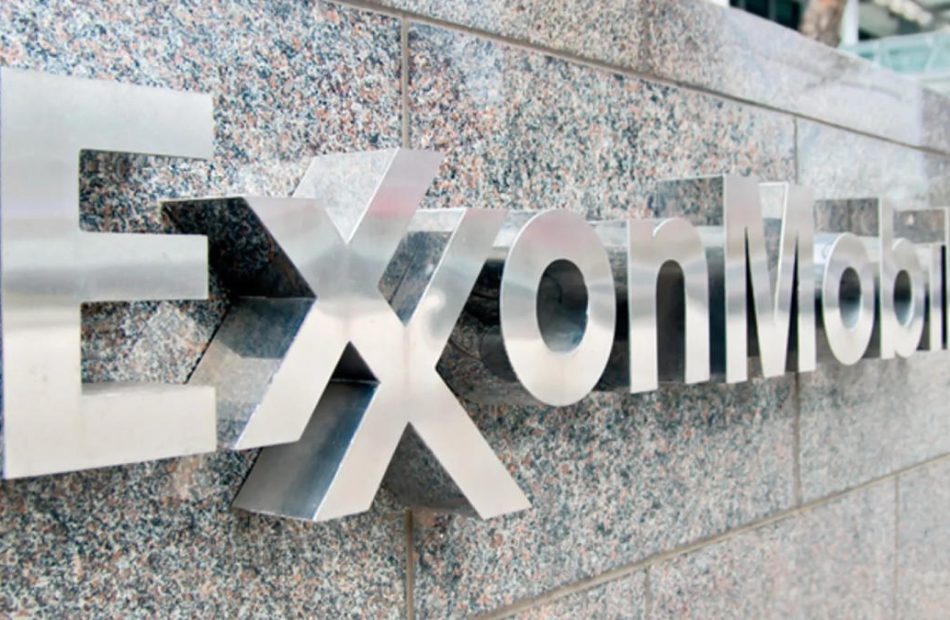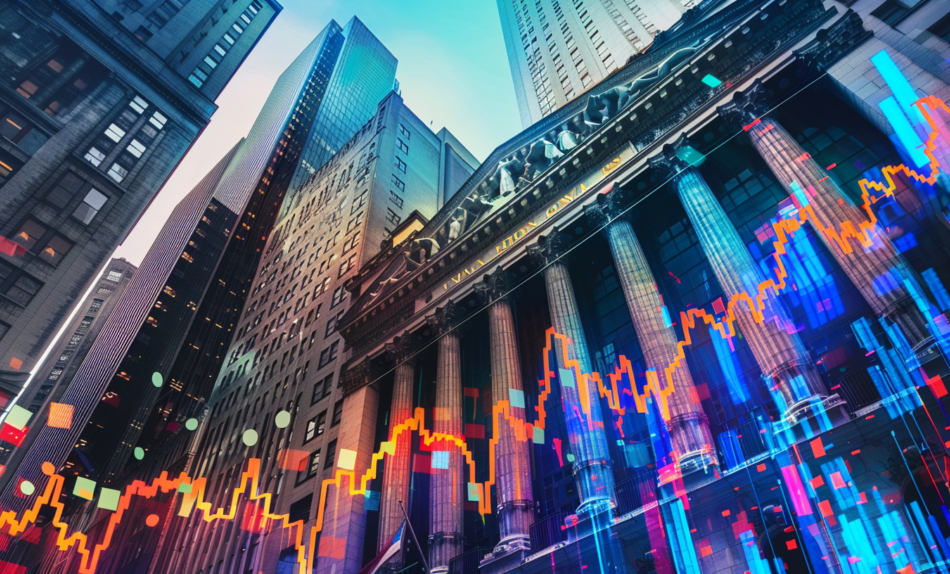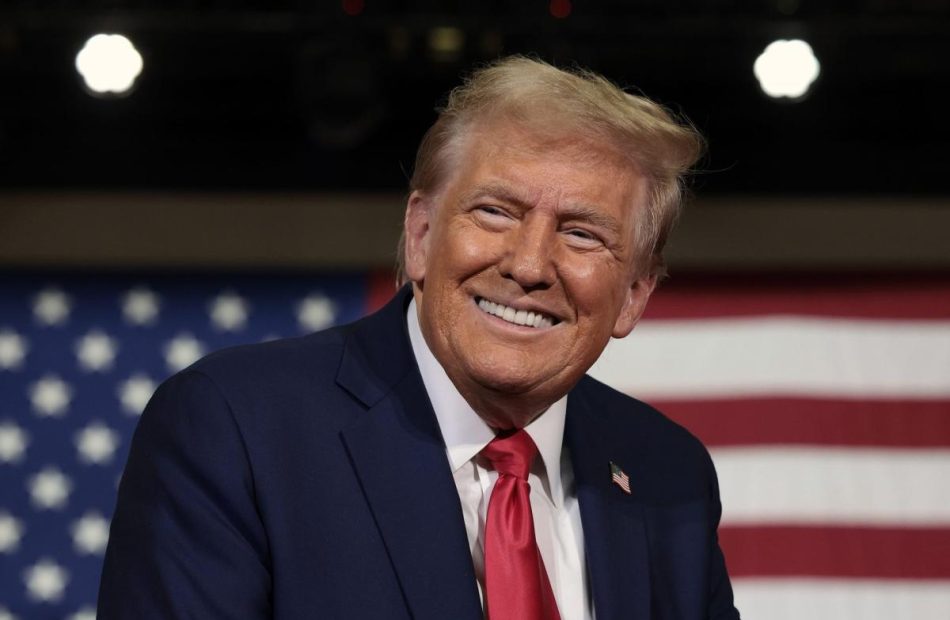$816M ExxonMobil verdict is latest as juries seek environmental justice
This story was originally published on Legal Dive. To receive daily news and insights, subscribe to our free daily Legal Dive newsletter.
When the Philadelphia Court of Common Pleas in September increased an already large verdict to $816 million against ExxonMobil, it was the latest ruling in a litigation trend regarding corporate accountability in environmental matters.
The litigation involved allegations of cancer linked to benzene exposure. The case, which has drawn attention in legal and environmental circles, underscores the increasingly charged landscape companies face as juries seek accountability for corporations’ impact on public health and environmental safety.
“ExxonMobil has known for decades that benzene causes cancer, yet they resisted warning the public and taking basic precautions to limit exposure,” plaintiff’s attorney Patrick Wigle said when the initial verdict was released in May.
The lawsuit originated from a claim made by a Philadelphia service station mechanic who alleged his cancer was caused by exposure to benzene — a known carcinogen — released from the gasoline he used in his work. The plaintiff argued that ExxonMobil didn’t warn him of the danger from exposure, despite knowing of benzene’s risk.
Benzene is commonly found in the oil and gas industry and has been linked to various forms of cancer, including leukemia. The plaintiff’s case included extensive evidence, including medical records and expert testimony and documentation, demonstrating a connection between the chemical’s risk and its failure to disclose that risk to workers.
After a trial, the jury found that ExxonMobil’s actions warranted punitive damages, which led to a verdict of $725.5 million.
ExxonMobil filed an appeal. The company argued that the punitive damages were excessive and claimed that it had adhered to regulatory standards, among other things.
In September, the Philadelphia Court of Common Pleas issued a ruling affirming the jury’s decision and the verdict, increasing it by $90.5 million in delay damages to $816 million. The court emphasized that the evidence presented during the trial demonstrated ExxonMobil’s failure to implement adequate safety measures and its knowledge of the risks associated with benzene.
“The evidence of ExxonMobil’s negligence and disregard for the health of the community is compelling,” Judge Michael Davis said. “The punitive damages awarded reflect not only the harm done to the plaintiffs but also serve as a deterrent to prevent such negligence in the future.”
Investors Cautious With Election Ahead, Treasury Yields Surge Further, Tesla Surprises: This Week In The Market
With the presidential election just two weeks away, investor risk appetite is taking a pause, resulting in a broadly flat week for Wall Street. Election uncertainty continues to loom large among investors as concerns persist over fiscal policies and potential trade disruptions due to tariffs.
Treasury yields rose further during the week, reflecting growing expectations that regardless of the election outcome, the next administration may struggle to enact stricter fiscal measures.
Adding to the cautious mood, the International Monetary Fund issued warnings on the long-term trajectory of U.S. national debt.
The S&P 500, as tracked by the SPDR S&P 500 ETF Trust SPY, endured three consecutive losing sessions before rebounding slightly to end the week, as strong earnings reinforced the view that corporate America remains resilient.
Tesla Inc. TSLA was the standout in earnings this week, with investors cheering after the company announced plans to launch more affordable models by the first half of 2025. Shares of Tesla surged 21% on Thursday, marking the stock’s biggest single-day gain since May 2013.
Looking ahead, the spotlight turns to next week’s earnings from five of the Magnificent Seven: Alphabet Inc. GOOGLGOOG, Microsoft Corp. MSFT, Meta Platforms Inc. META, Amazon.com Inc. AMZN and Apple Inc. AAPL — as well as official October labor market statistics.
You might have missed…
Elon Musk’s fortune skyrocketed by $33.5 billion in one day following Tesla’s stock rally that boosted its valuation by nearly $150 billion. This impressive market performance underscores investors’ renewed optimism in Tesla’s future growth and dominance in the EV sector.
Boeing Co. BA machinists rejected a proposed 3.5% wage hike, prolonging their five-week strike. The ongoing labor dispute compounds Boeing’s financial struggles, with the company already facing a $6 billion loss and significant cash burn as it seeks to resolve worker grievances.
General Motors Co. GM reported better-than-expected third-quarter earnings, with revenue and EPS surpassing forecasts. Buoyed by strong consumer demand, the company raised its annual profit outlook, reinforcing its growth momentum and financial resilience. Shares rallied over 7%.
U.S. shoppers plan to spend $2,100 this holiday season, up 7% from 2023, according to a Bank of America survey. The increase signals robust consumer confidence, brightening the outlook for retail stocks, as gauged by the SPDR S&P Retail ETF XRT. Historical trends suggest they usually outperform after the holiday season.
Read Now:
Photo: Wall Street illustration created using artificial intelligence via MidJourney.
Market News and Data brought to you by Benzinga APIs
© 2024 Benzinga.com. Benzinga does not provide investment advice. All rights reserved.
Peter Schiff Warns Investors Against Keeping $20K In Cash: 'One Of The Riskiest Bets You Can Make'
Prominent economist Peter Schiff cautioned investors against holding cash as a long-term strategy, warning of significant purchasing power erosion amid growing inflation concerns.
What Happened: The outspoken financial commentator and Bitcoin (CRYPTO: BTC) skeptic responded to an X user who expressed anxiety about investing their $20,000 savings, stating, “I think investing in cash is one of the riskiest bets you can make. You may not lose any money, but your money will lose most of its purchasing power.”
Don’t Miss:
Schiff’s remarks came as part of a broader discussion about U.S. Treasury yields and monetary policy. He noted that while 10-year Treasuries were yielding 4.25%, he anticipates higher yields due to mounting national debt and expanding budget deficits.
“When the economy officially enters the next recession, prepare for the biggest QE program yet!” Schiff wrote on X, referring to potential future quantitative easing measures by the Federal Reserve.
See Also: This Adobe-backed AI marketing startup went from a $5 to $85 million valuation working with brands like L’Oréal, Hasbro, and Sweetgreen in just three years – here’s how there’s an opportunity to invest at $1,000 for only $0.50/share today.
Why It Matters: Schiff’s recent comments align with his previous warnings about the U.S. dollar’s vulnerability. In August, he predicted the dollar’s potential collapse due to rising rate cut bets, which have negatively impacted the currency. He noted that the U.S. dollar index had fallen to its lowest level since late 2023, suggesting further weakness ahead.
Schiff has also been vocal about his skepticism toward Bitcoin, arguing that it lacks intrinsic value and is destined to fail. He has consistently contrasted Bitcoin’s digital nature with the physical properties of gold, which he advocates as a more stable investment.
In September, Schiff criticized investors for choosing Bitcoin ETFs over gold ETFs, claiming they bet on the wrong horse. Despite substantial inflows, Bitcoin ETFs underperformed compared to gold ETFs, reinforcing his belief in gold’s superiority as an investment.
Nuclear power stocks are soaring amid an AI energy push. Here are 7 names to watch.
-
Tech giants like Amazon and Microsoft are striking nuclear power deals for their AI data centers.
-
The nuclear power resurgence is driven by clean energy demand and AI’s soaring power needs.
-
These nuclear-focused stocks have soared this year amid an ongoing nuclear renaissance.
The nuclear power industry is undergoing a renaissance as demand for clean power soars across the country, partly driven by the soaring energy needs associated with artificial intelligence data centers.
Mega-cap technology companies, including Amazon, Microsoft, and Alphabet, have inked nuclear power deals to feed their growing energy needs as AI becomes a bigger part of their businesses.
One utility company is even restarting the Three Mile Island nuclear power plant after inking a 20-year deal to sell the power to Microsoft.
Three Mile Island, located on the Susquehanna River in Pennsylvania, was the site of the country’s worst nuclear accident in 1979.
Meanwhile, Amazon has led a $500 million financing round for a company developing modular nuclear reactors and purchased a nuclear-powered data center in March for $650 million.
“One of the fastest ways to address climate change is by transitioning our society to carbon-free energy sources, and nuclear energy is both carbon-free and able to scale—which is why it’s an important area of investment for Amazon,” Amazon Web Services CEO, Matt Garman, said in a press release.
Analysts on Wall Street are encouraged, too.
“The nuclear energy projects involve the construction of several Small Modular Reactors (SMRs), a compact, advanced type of reactor that can be built closer to grids and completed faster than traditional reactors. SMRs also offer the potential to reduce carbon emissions, paving the way for cleaner, more sustainable energy,” CFRA analyst Arun Sundaram said in a note last week.
He added: “With the full power of AI dependent on both data centers and energy infrastructure, these investments further help AMZN secure its positioning as a leading cloud/AI provider.”
The resurgence in nuclear power has led to big moves on Wall Street, with some stocks more than doubling in just a few days this month.
From utility companies to uranium miners to small-scale nuclear developers, these stocks are soaring amid the revival of America’s nuclear power industry.
7. Cameco
Ticker: CCJ
Market value: $23.6 billion
YTD Performance: +25%
6. BWX Technologies
Ticker: BWXT
Market value: $11.3 billion
YTD Performance: +62%
5. Oklo
Ticker: OKLO
Market value: $2.4 billion
YTD Performance: +88%
Costco Wholesale Executive Vice President Trades Company's Stock
On October 25, a recent SEC filing unveiled that RICHARD GALANTI, Executive Vice President at Costco Wholesale COST made an insider sell.
What Happened: According to a Form 4 filing with the U.S. Securities and Exchange Commission on Friday, GALANTI sold 1,416 shares of Costco Wholesale. The total transaction value is $1,267,279.
Monitoring the market, Costco Wholesale‘s shares up by 0.75% at $900.13 during Friday’s morning.
Unveiling the Story Behind Costco Wholesale
Costco operates a membership-based, no-frills retail model, predicated on offering a select product assortment in bulk quantities at bargain prices. The firm avoids maintaining costly product displays by keeping inventory on pallets and limits distribution expenses by storing its inventory at point of sale in the warehouse. Given Costco’s frugal cost structure, the firm is able to price its merchandise below competing retailers, driving high sales volume per warehouse and allowing the retailer to generate strong profits on thin margins. Costco operates over 600 warehouses in the United States and enjoys over 60% market share in the domestic warehouse club industry. Internationally, Costco operates another 270 warehouses, primarily in markets such as Canada, Mexico, Japan, and the UK.
Key Indicators: Costco Wholesale’s Financial Health
Revenue Growth: Costco Wholesale displayed positive results in 3 months. As of 31 August, 2024, the company achieved a solid revenue growth rate of approximately 0.96%. This indicates a notable increase in the company’s top-line earnings. When compared to others in the Consumer Staples sector, the company faces challenges, achieving a growth rate lower than the average among peers.
Exploring Profitability:
-
Gross Margin: With a low gross margin of 12.68%, the company exhibits below-average profitability, signaling potential struggles in cost efficiency compared to its industry peers.
-
Earnings per Share (EPS): Costco Wholesale’s EPS outshines the industry average, indicating a strong bottom-line trend with a current EPS of 5.3.
Debt Management: With a below-average debt-to-equity ratio of 0.35, Costco Wholesale adopts a prudent financial strategy, indicating a balanced approach to debt management.
Evaluating Valuation:
-
Price to Earnings (P/E) Ratio: A higher-than-average P/E ratio of 53.95 suggests caution, as the stock may be overvalued in the eyes of investors.
-
Price to Sales (P/S) Ratio: With a relatively high Price to Sales ratio of 1.56 as compared to the industry average, the stock might be considered overvalued based on sales performance.
-
EV/EBITDA Analysis (Enterprise Value to its Earnings Before Interest, Taxes, Depreciation & Amortization): A high EV/EBITDA ratio of 32.35 positions the company as being more valued compared to industry benchmarks.
Market Capitalization Highlights: Above the industry average, the company’s market capitalization signifies a significant scale, indicating strong confidence and market prominence.
Now trade stocks online commission free with Charles Schwab, a trusted and complete investment firm.
The Impact of Insider Transactions on Investments
Insider transactions should be considered alongside other factors when making investment decisions, as they can offer important insights.
Considering the legal perspective, an “insider” is defined as any officer, director, or beneficial owner holding more than ten percent of a company’s equity securities, according to Section 12 of the Securities Exchange Act of 1934. This includes executives in the c-suite and major hedge funds. These insiders are mandated to disclose their transactions through a Form 4 filing, to be submitted within two business days of the transaction.
Pointing towards optimism, a company insider’s new purchase signals their positive anticipation for the stock to rise.
Nevertheless, insider sells may not necessarily indicate a bearish view and can be influenced by various factors.
A Closer Look at Important Transaction Codes
When analyzing transactions, investors tend to focus on those in the open market, detailed in Table I of the Form 4 filing. A P in Box 3 denotes a purchase,while S signifies a sale. Transaction code C signals the conversion of an option, and transaction code A denotes a grant, award, or other acquisition of securities from the company.
Check Out The Full List Of Costco Wholesale’s Insider Trades.
Insider Buying Alert: Profit from C-Suite Moves
Benzinga Edge reveals every insider trade in real-time. Don’t miss the next big stock move driven by insider confidence. Unlock this ultimate sentiment indicator now. Click here for access.
This article was generated by Benzinga’s automated content engine and reviewed by an editor.
Market News and Data brought to you by Benzinga APIs
© 2024 Benzinga.com. Benzinga does not provide investment advice. All rights reserved.
The Top Gold Miner Is Struggling to Capitalize on Bullion’s Boom
(Bloomberg) — Gold prices are at record highs. But disappointing results at the world’s largest miner of the yellow metal signals companies may be struggling to take full advantage of sizzling demand.
Most Read from Bloomberg
Newmont Corp. shares posted their biggest daily drop since 1997 on Thursday, tumbling 15% after the Denver-based company posted earnings, revenue and profit margins that fell short of analysts’ estimates in the third quarter, dragged down by higher costs. The stock traded a further 3% lower on Friday, with top rivals Barrick Gold Corp. and Agnico Eagle Mines Ltd. also retreating.
Analysts had high hopes for the industry. Gold has surged more than 30% this year, while fuel prices — one of the miners’ key expenses — have been easing. But Newmont’s results revealed that big gold producers are still wrestling with inflationary pressures, especially regarding labor costs, that have lasted longer than expected.
“There’s a potential read-through here, assuming Newmont’s takeaways are accurate, that this is a risk factor for the industry,” said Josh Wolfson, a mining analyst with Royal Bank of Canada.
Newmont earned 80 cents a share, well short of the average estimate of 89 cents among analysts surveyed by Bloomberg. Revenue of $4.61 billion also trailed estimates, as did its gross profit margin, which slipped below 50%.
The company said it spent more to dig up the precious metal at its mines in Australia, Canada, Peru and Papua New Guinea than in the previous quarter. Capital expenses rose 10% due to expansion projects in Australia and Argentina, while some of the company’s highest expenses came from major assets it picked up through last year’s $15 billion takeover of Newcrest Mining Ltd.
Some of those cost issues are specific to the company, and not necessarily indicative of a broader industry trend. Newmont is undertaking costly maintenance work at its Lihir mine in Papua New Guinea — a notoriously complex operation in a remote region — and it spent more to restart its Cerro Negro mine in Argentina after operations were paused due to the deaths of two workers in April.
But the company’s growing costs for workers could signal trouble across the industry.
“It’s the labor costs where we’re seeing that escalation,” Chief Executive Officer Tom Palmer told analysts in a conference call Thursday.
Trump Media stock soars nearly 200% as momentum traders ride its coattails to chase major returns
Trump Media stock is surging over the past month, shooting up 198%.
The recent catapult comes after the stock tumbled to an all-time low of $12.15 on Sept. 23. The stock is now trading at $36.30 a share.
Trump Media and Technology Group (TMTG) is the holding company that owns Truth Social, the upstart social media platform that former President Donald Trump founded when he was kicked off mainstream sites in the wake of the attack on the U.S. Capitol on Jan. 6, 2021, and his refusal to accept that he lost the 2020 presidential election. The stock trades on Nasdaq under the symbol DJT, reflecting Donald John Trump’s initials.
Despite its recent rally, TMTG’s financial performance has been lackluster. In the first half of this year, the company reported losses of $344 million on revenues of $1.6 million. However, over the last few weeks the stock’s momentum could have attracted interest from momentum-based investors, eager to cash in on its growth.
“The extremely high volume of trading relative to the public float suggests that there are many traders, both individuals and institutions, following short-term momentum strategies,” said University of Florida finance professor Jay Ritter. “These traders contribute to volatility, in that when the tide turns, many of them move in the same direction. A drop in the stock price leads others to sell, driving the stock down. When the stock rises, they buy, driving the price higher.”
There are a bevy of colorful names for short-term momentum investors. So-called sharks trade aggressively in search of fast profits; piranhas describe shivers of such traders. Cheetahs are high-frequency traders, and those on the bandwagon follow trades after they start.
October trading volumes for TMTG have been astronomical, with hundreds of millions of shares changing hands. Last week more than 278 million shares were traded on the market, according to Bloomberg data. The week before, 194 million shares were traded.
Nonetheless, it is impossible to divorce TMTG’s stock surge from Trump’s political fortunes. The stock often trades independently of fundamentals related to its business operations.
“The surge in DJT corresponds to the increase in the polling numbers for Donald Trump winning the presidential election,” Ritter said.
In recent weeks, election polls show the narrow lead Vice President Kamala Harris had over Trump slipping. The race now appears virtually tied, with Trump having a slight edge in certain forecasts. On Monday, The Economist announced its election forecast had Trump with a 54% chance of winning the race. Nate Silver, founder of FiveThirtyEight, said that while the race is a 50/50 toss up, he sees Trump winning.
Why Intel, Broadcom, and Taiwan Semiconductor Stocks Popped Today
Shares of semiconductor giants Broadcom (NASDAQ: AVGO), Intel (NASDAQ: INTC), and Taiwan Semiconductor Manufacturing (NYSE: TSM) all marched higher Friday after Bank of America analyst Vivek Arya was quoted encouraging investors to invest in the “generational capex cycle in generative AI infrastructure.”
Capex is shorthand for capital expenditures. Broadcom, TSMC, and Intel are chipmakers considered part of said “capex cycle,” inasmuch as they produce the semiconductor chips that AI companies must buy if they want their artificial intelligence (AI) programs to function. As of 1 p.m. ET, Broadcom shares were up 2.5%, Intel had risen 3.5%, and Taiwan Semiconductor Manufacturing, also called TSMC, is doing best of all, with a 3.6% gain.
So that’s the big picture backgrounding today’s moves in semiconductor stocks generally. But why are these three stocks moving specifically? Well, in the case of Broadcom the answer is obvious: Alongside Nvidia, Arya named Broadcom as his top pick among AI stocks.
Intel and TSMC, on the other hand, have additional catalysts worth highlighting.
As Nvidia’s go-to company for contract manufacturing of its chips, anything good for Nvidia is assumed to be good for TSMC as well. On top of that, TSMC got some especially good news last night when Bloomberg reported that the company’s new advanced 4-nanometer chip manufacturing plant in Arizona is generating “yields” of 4% more usable chips than similar TSMC manufacturing plants back in Taiwan. This fact should translate directly to more revenue and higher profitability for TSMC, prompting a company spokesperson to call the number “highly satisfactory, with a very good yield.”
TSMC furthermore promised to begin “volume production” at the plant in early 2025, which will allow the company to capitalize on these efficiency gains, and potentially improve TSMC’s chances to benefit from U.S. government subsidies under the Chips Act.
Indeed. What about Intel?
I wish I could give better news on this front, but here’s the real skinny: Beyond the broad enthusiasm for chips stocks generated by Arya’s encouragement, Intel stock seems to be benefiting most today from an update on plans to expand chips production in Ohio. Specifically, the company’s website states that “Intel is planning to invest more than $28 billion in the construction of two new leading-edge chip factories in Ohio to boost production to meet demand for advanced semiconductors.”







